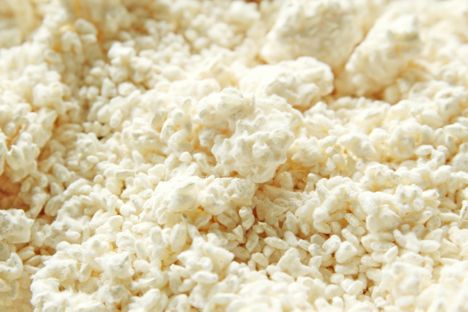
Koji: the Japanese ingredient responsible for some of our favourite flavours
We take a look at how this very special Japanese mould continues to revolutionise fermentation today.
Koji: the Japanese ingredient responsible for some of our favourite flavours
We take a look at how this very special Japanese mould continues to revolutionise fermentation today.
Every cuisine has certain ingredients at their core — Italian food would be nothing without the tomato or parmesan, as would the French without garlic. Soy sauce, miso and mirin play a similarly central role in Japanese cookery, forming the base of many of the country’s most famous dishes. However, none of these three ingredients would exist if it wasn’t for a tiny spore called Aspergillus oryzae, better known as koji. Discovered centuries ago, koji is a hugely versatile culture constantly being used in new and innovative ways. In Western cuisines, yeast is what we use to do things like ferment beer and wine or create bread from flour, but in Japan, koji takes on that role to produce many everyday ingredients in much the same way.
Within the world of fermentation, koji can be thought of as the key to transforming foods and releasing rich umami flavour profiles. However, for many people in the UK, cooking with koji still remains a daunting process as they don’t know exactly what it is or how it works. Understanding the science behind it, however, will help you unlock koji’s true potential and mean that you can even start experimenting with it at home.
The first thing that needs addressing is what koji actually is. Slightly confusingly, koji is both the name of a mould grown on cooked grains, and for the starter culture used to grow said mould (koji-kin in Japanese). To grow koji, this culture is added to grains (usually steamed rice or soybeans), which are then left to ferment for a few days in a warm place, allowing the enzymes to feed on the carbohydrates and proteins present in the growing medium. The result is a fluffy white mould which coats the outside of the grains, which is what more of us probably picture when we think of koji.
However, the production of koji is just the start of this fascinating ferment. Due to the enzymes found within koji, it has the ability to break down the proteins and carbohydrates in most substances it comes into contact with, converting them into amino acids, fatty acids and more simplified glucose. This is what creates the rich and complex flavours that we associate with foods that have been created by fermentation. Glutamate for example, an amino acid produced by koji, is what creates the umami taste sensation, which is why condiments such as miso and soy sauce (both made using koji) have such an intense savouriness to them.
Koji is predominantly associated with Japanese cookery, and for good reason too. Many of Japan’s most important seasonings and ingredients are made via fermentation using koji. White miso, for example, is made by growing koji on steamed rice which is then added to ground up soybeans and salt and left to ferment for months. Over time the koji breaks down the starch in the rice to form simple sugars and converts the protein in the soybeans into amino acids, giving the miso its distinctive umami flavour with a touch of salty sweetness. Meanwhile, in sake production, koji is mixed with rice and left to ferment, before yeast is added to convert the resulting sugars into alcohol.
For years, koji wasn’t used outside of the production of these core Japanese ingredients (miso, mirin, soy sauce, sake and shōchū), but more recently chefs have begun experimenting with the mould. Fermentation obsessives like Noma’s René Redzepi realised that the enzymes produced by koji could break down the proteins in meats as well as grains, meaning that meats could be fermented to create sauces like garum. Meanwhile, Jeremy Umansky, the owner of Larder Delicatessen and Bakery in Cleveland, has developed something called koji charcuterie. By experimenting with the culture, he discovered that koji-inoculated meats could be cured and tenderised in around a third of the normal time compared to regular salt.
The same technique can also be used to age cheeses and even vegetables. In fact, koji is starting to play an important role in plant-based cookery. Its ability to bring out intense umami flavours in vegetables is unique, and has led chefs like Umansky to create what he calls vegan charcuterie. His beetroot charcuterie, for example, is made by curing and smoking the beets before culturing them with koji and hanging out to dry. Not only does this intensify the flavour of the beetroot but it also preserves it.
Koji is also nowadays commonly used by chefs in brines and marinades as a way of imparting flavour into ingredients without needing to actually inoculate them with the culture. The past twenty years has seen the rise of shio koji in particular, a seasoning made simply from koji rice, water and salt. Many Japanese chefs use shio koji as marinade when cooking meat or fish, while others use it more generally as a replacement for salt. Making your own shio koji from koji rice is a simpler way of using the mould at home, without needing to grow a culture yourself. Koji rice or shio koji are now readily available to buy online in the UK, giving home cooks a chance to play around and see what the ingredient can do in their own kitchens.
This modern experimentation with koji has changed the way we regard the starter culture. What was, for a long time, something used exclusively in Japanese cuisine is now at the cutting edge of modern gastronomy. With chefs and home cooks alike both continuing to experiment with koji, it’s only a matter of time before further discoveries are made about its uses.

